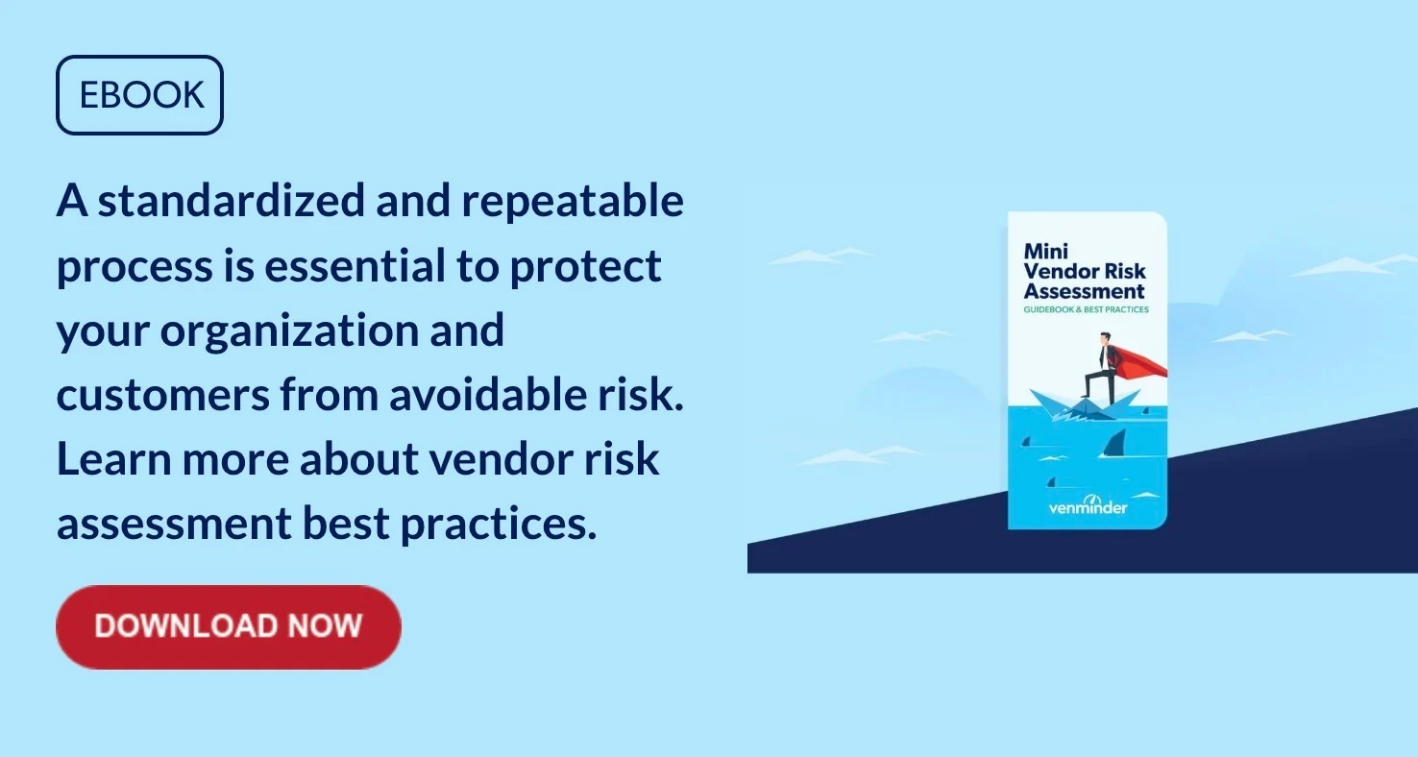You're probably at least somewhat familiar with the activities in third-party risk management. Whether you're collecting due diligence from your vendors or monitoring their performance, there's a lot to do to protect your organization from third-party risk on an ongoing basis.
But before you can even begin mitigating and managing this risk, you must know how to identify and quantify it. This is done through a third-party risk assessment.
Various factors can contribute to third-party risk, so it's vital to conduct a risk assessment both before and during a vendor engagement. This essential process involves identifying the types and amounts of risks associated with outsourcing a particular product or service.
What Is a Third Party?
Let's begin with a simple explanation of a third party. Your organization likely has written contracts with other companies or entities that provide you or your customers with goods or services. These companies are your third parties, sometimes referred to as vendors. There will always be some risk associated with a third party, usually ranging somewhere on the scale from low, moderate, or high.
Some examples of third parties include:
- Office supplies provider
- Confidential destruction and document shredding
- Marketing firm
- Call center
- Core processor
- Cloud service provider

Risk Assessment: Digging Deeper into the Why
You might be wondering why third-party risk assessments are necessary. Couldn't you just make your life easier by managing all third-party risks the same way? Not exactly.
Here are some of the reasons why third-party risk assessments are a must:
1. It’s a regulatory requirement.
That's right! Regulators continue to emphasize that third-party relationships are risky, which is reflected in their guidelines over the years. There’s a common misconception that third-party risk assessments must be performed only on the vendor.
But it's equally important to consider third-party risk at the product or service level as well. As a result, you might need to perform multiple third-party risk assessments if you have multiple products or services with the same vendor.
Third-party risk assessments are referenced in regulatory guidance across different industries, including financial services and healthcare. Take some time to familiarize yourself with examples of this guidance, such as FDIC FIL44-2008, OCC Bulletin 2013-29, and the HHS HIPAA regulation. There is language around risk assessments in each of these regulatory guidelines, which should help clarify the process.
2. Third-party risk assessments help determine the specific risk areas you may want to monitor more closely.
As you complete the risk assessment, you may discover that certain business areas seem to have more risk. For example, the third-party's business continuity and disaster recovery planning may not meet the standards you expect. Or the third-party's cybersecurity practices aren't as developed as you previously thought. It is possible that the third-party risk assessment will reveal details that warrant additional monitoring or a follow-up conversation with the vendor.
In the event these details are discovered post-contract, your organization may need to implement more controls. In contrast, a pre-contract risk assessment gives you the opportunity to contractually bind a third party to take certain actions, such as implementing additional controls or carrying more insurance.
3. It’s a best practice.
It's good sense and a best practice to identify and understand the risks your organization may face before entering into business with a third party. Failure to conduct third-party risk assessments makes your organization more vulnerable to serious threats such as cyberattacks and data loss, increased costs, lost revenue, legal fees and litigation, regulatory fines or enforcement actions, and damage to your reputation and brand.
There’s no denying that third-party risk changes over time. Risk assessments should never be a one-time activity that you do only at the beginning of the vendor relationship. Critical and high-risk vendors should be reassessed at least annually, maybe more frequently, if you find a specific risk that extends beyond your organization's risk appetite. Each organization must determine the amount of third-party risk it's willing to accept.
The use of third-party risk assessments will help your organization prevent expensive and damaging surprises in the future. When you know the risk upfront, you're better prepared to implement the appropriate controls to keep your organization safe. Regular assessments show that you're adequately evaluating your third parties' risk, which is a sure-fire way to satisfy regulators, senior management, and the board.





.gif?width=1920&name=Sample-Graphic-Animation%20(1).gif)




